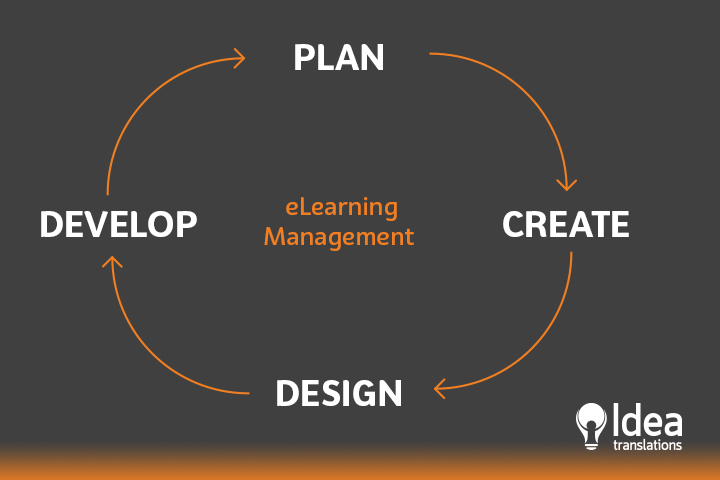
The number one guide to transform your eLearning translation process
When working on an eLearning project, whether or not the project includes multiple language eLearning translations, there are many variables to consider: content development, instructional design approach, learning experience, images, animations, on screen text, audio, scripts, pronunciation guides, and the list goes on.
A meticulous and process-oriented project plan, with an approach through sprints as opposed to beginning to end, will create realistic deadlines, keep cost within budget and avoid unnecessary stress. That is why we’ve created this small guide with tips on how to get through the obstacles, and make it through your eLearning development or eLearning translation process.
1. Unrealistic deadlines
Here at Idea Translations we are very familiar with the development and translation of eLearning. More than once, we’ve come across clients that oversimplify the process and have expectations that are not within realistic timeframes for complex projects. Therefore, transparency and honesty are the best approach to guarantee a successful project and true partnerships, as opposed to transactional relationships with clients. We layout and provide clients with a very detailed step by step list, including time required for each step that will yield optimal results. Make sure you account for all the steps and add 1-2 days’ cushion for each step. Especially those that require review by team members that do not focus on that role, as they are doing this in addition to all their regular day to day work. Internal clients have to be aware of all the process and time it takes to complete each step, in order to create a successful eLearning course. Their objectives need to be aligned with reality.
2. Objective
Before getting started with the eLearning project, is the objective clear? Do you have similar training courses that have been proven successful? The goal needs to be well-defined in terms of content, style, storyboard. This first step will be fundamental in order to keep things in perspective every time you or another team member is side tracking.
3. Appoint a dedicated team
If it is your first time working on an eLearning development or eLearning translation process, it is important that you create an internal team within your organization, and appoint the individuals that are going to be in charge of the different elements of the project. You will very likely be the leader, but it is important to clearly identify who will be responsible for content development, who will review it, who will make the graphic design, who is going to be the eLearning engineer and whom within the organization will review and approve the various steps. Some or all of these steps might be provided by an eLearning vendor but certainly, review by the client on the various steps is critical for the success of the project.
Patience.
eLearning is a creative, handcrafted process. Results are not 100% objective, since ideas have a creative process. You have to let go and trust the eLearning professionals.
To learn more about creating an eLearning development or eLearning translation plan, contact us to speak with one of our eLearning advisors.



